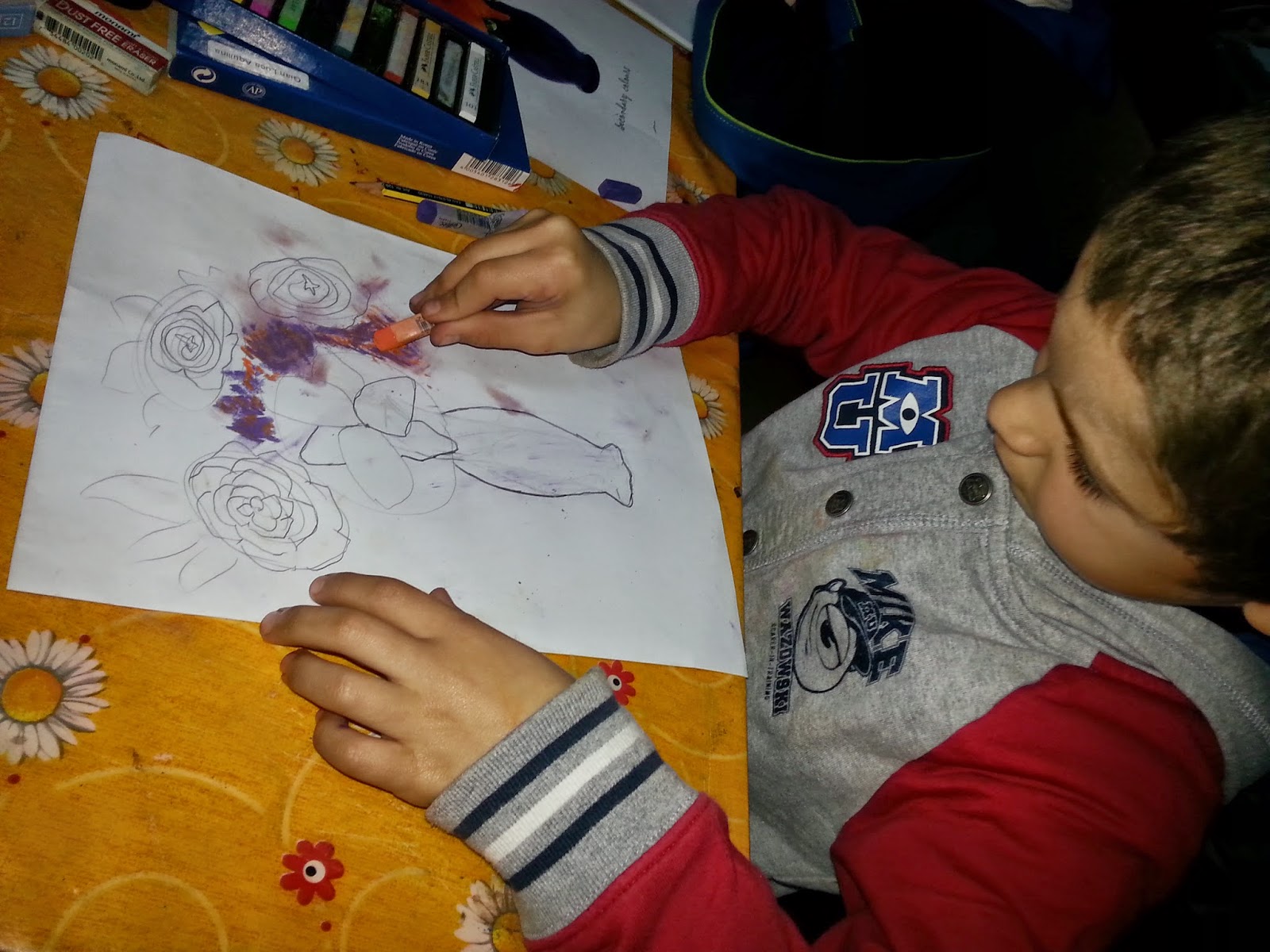Last lesson was all about the primary colours (red, blue and yellow.) Today we took this a step further and experimented what colours we can create out of these three.
The children created their own secondary colour wheel by mixing pencil colours/ oil pastels. It is good to note that the base colour is the lighter colour since it allows the darker one to make more impact. For instance, orange= yellow+ red, therefore, yellow being lighter than red, first apply the yellow and then shade the red slowly. It is easier to darken gradually rather than lighten a darker colour.
Green= blue + yellow
Orange= red + yellow
Purple= magenta + blue. Using light blue brings a lilac colour.
Violet= red + blue (like an aubergine colour)
The children copied and drew flowers in vases by using the secondary colours, those being green, orange and purple. This was a great opportunity to learn drawing lilum, roses, fluffy sempreviva and tiny purple flowers.
A tip I gave teh childrne to draw the roses was make a circle with a spiral in it. The spiral acts as a guidance to draw the petals (in the shape of a wide 'v',) which start as small and clustered, which eventually grow in size.
The petals of the lilium were broken down into ovals/traingles/ diamonds.
These are to be continued next lesson, so stay tuned!



























No comments:
Post a Comment